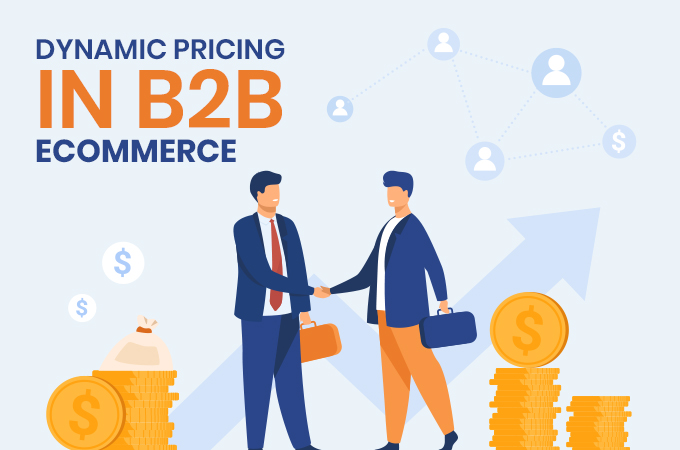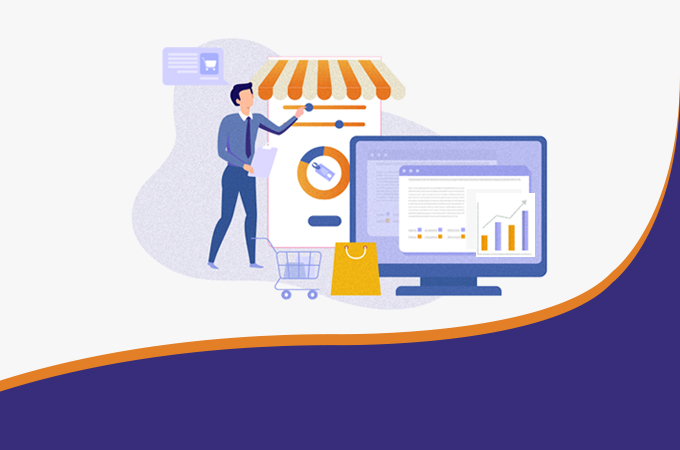
A favorable outcome of the Covid-19 pandemic is the rapid acceleration of eCommerce and its subsequent adoption by the masses. According to research conducted by eMarketer, eCommerce sales witnessed a growth of 32.4% in 2020 while the figures for brick-and-mortar stores fell by 3.2%. The rapid rise in B2B eCommerce means that dynamic pricing is becoming an important aspect of the B2B model.
What is Dynamic Pricing?
Dynamic pricing is an oft-used strategy in industries like transportation, retail, hospitality, etc. Dynamic pricing is a strategy under which prices change dynamically depending on the fluctuating market conditions and customer demands. It takes into account different algorithms like consumer behavior, competitor pricing, supply and demand, along other market changes.
The types of dynamic pricing include:
- Cost-plus pricing: Prices vary according to the cost and margin changes.
- Value-based pricing: Depends on the customers’ willingness to pay.
- Competitor-based pricing: Prices vary according to the competitors’ pricing.
- Time-based pricing: Depends on changing prices according to the day, week, seasonal prices, or other time-related variables.
- Conversion rate pricing: Prices change according to the conversion rate of the website.
Digital technologies are disrupting B2B sales models and are driving the need for reinventing the pricing strategies. While many have their reservation against dynamic pricing, it is important to understand that it provides eCommerce vendors with the opportunity to understand and predict, when prices need to be pushed or lowered. This strategy helps in increasing revenue, minimizing losses, and better optimization of resources. This also offers an opportunity for the sales team to test different pricing strategies and improve their methods and discover new insights.
Benefits of the Dynamic Pricing Model:
- It helps in maximizing profits on every transaction. With B2B eCommerce, there is generally a huge difference between what a customer pays and is willing to pay, the difference of which is the surplus left overboard. By analyzing customer behavior and their willingness to pay, you can land on some consumer surplus.
- Dynamic pricing allows us to better understand the market and push or lower prices accordingly. It improves the decision-making process and provides insights that can be leveraged to improve the process.
- It further helps in improving sales of slow-moving SKUs. Dynamic pricing aids with stock management by lowering the prices of lackluster SKUs and increasing prices of fast-selling products that can be easily replenished.
- By meeting customer demands, offering seasonal discounts, lowering prices of fast-selling and in-demand items, vendors can boost conversion rates of items and increase the sales of the store.
- Dynamic pricing helps eCommerce vendors to remain competitive by offering at-par products, services, and prices like their competitors.
- It helps in making the system stronger by self-discovery and testing multiple hypotheses.
- ‘Penetration pricing’ is a form of dynamic pricing, where the price of a product is initially set to low to reach a wider fraction of the market quickly but is eventually increased once the demand surges.

Disadvantages of Dynamic Pricing:
Many B2B companies are still apprehensive of the dynamic pricing strategy, as they consider this an overkill. The “price gouging” form is considered by many to be unethical. Dynamic pricing can also lead to price wars and trigger stiff competition. It can alienate valued customers if they know that they are paying more for the same product or service. It’s a complex strategy that makes it difficult for B2B vendors to implement.
To mitigate potential pitfalls, it is important to maintain transparency in the process and offer a unified customer experience. The adoption of the dynamic pricing module is unique to every organization depending on its operation and services. Dynamic pricing software is a means to improve and automate the time-honored pricing strategy that has always been there in the B2B world. To make it successful, it should seamlessly merge with your company’s objectives and policies.
Citytech Software has developed a B2B eCommerce solution powered by nopCommerce to meet the changing demands of the B2B community and help them leverage modern tools and technologies to achieve organizational goals. To adopt this platform for your business, visit https://www.citytechcorp.com/solutions/b2b-nopcommerce/
